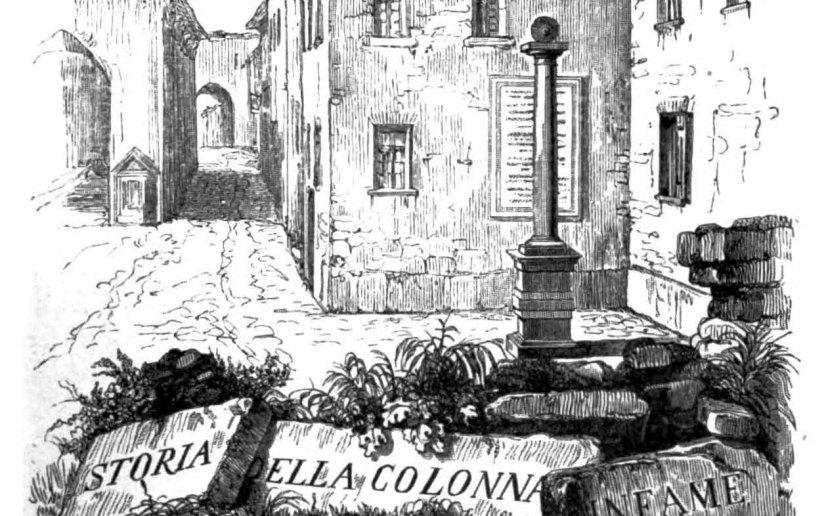Storia della colonna infame, an historical essay by Alessandro Manzoni
"Ignorance in physics can produce drawbacks, but not inequities; and a bad institution does not apply by itself "

Storia della colonna infame
«L’ignoranza in fisica può produrre degl’inconvenienti, ma non delle iniquità;
e una cattiva istituzione non s’applica da sè»
Alessandro Manzoni, Introduzione della Storia della colonna infame
La Storia della colonna infame is a historical essay written by Alessandro Manzoni linked to the historical period in which the novel I promessi sposi is set.
The story tells of the trial filed in Milan, during the terrible plague of 1630, against two alleged greasers, believed to be responsible for the pestilential contagion through mysterious substances, following an accusation – unfounded – by a “sissy” of the people, Caterina Rosa.
The trial, which took place historically in the summer of 1630, decreed both the capital condemnation of two innocent people, Guglielmo Piazza (health commissioner) and Gian Giacomo Mora (barber), executed with the torture of the wheel, and the destruction of the house-shop of the latter. As a warning, the “infamous column” was erected on the rubble of Mora’s home, which gives the story its name.
It was not until 1778 that the infamous column, which by now had become a testimony of infamy no longer against the condemned, but of the judges who had committed a huge injustice, was demolished. In the Sforzesco Castle in Milan the plaque is preserved, which bears a description, in seventeenth-century Latin, of the penalties imposed.
With this tragic story, Manzoni wants to deal with the relationship between the individual’s responsibilities and the personal or collective beliefs and beliefs of the time
“Storia della Colonna Infame” su PROGETTO MANUZIO di Liber Liber (gratis, diversi formati ebook)
“Storia della Colonna Infame” su AMAZON (gratis, formato Kindle)








